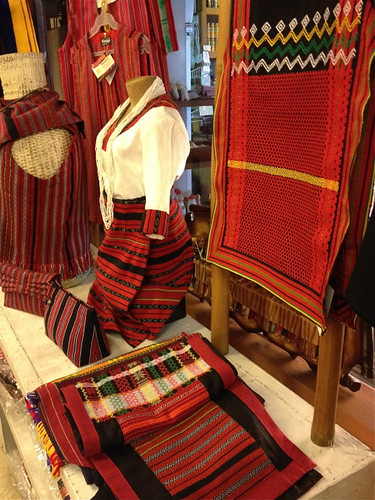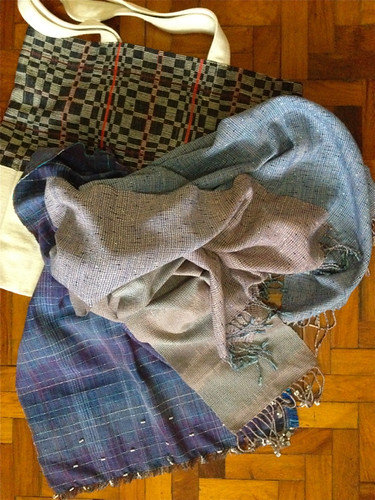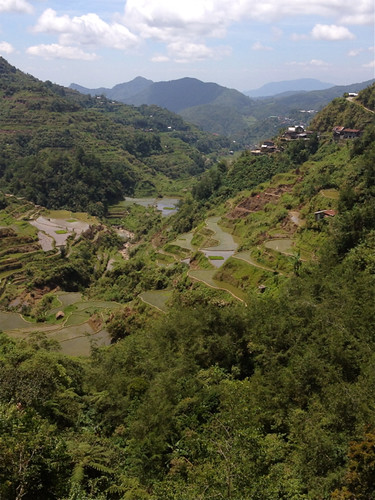We saw some of the weaving on our travels - but nothing that I admired enough to buy. I already have a stack of Philippine weaving that languishes on my shelves, bought over many years. Much of what I saw on this trip was, sadly, of lesser quality than the older cloths I already have and so there was little motivation to buy more (other than the desire to support local crafts - but I have to stop somewhere) . I guess this decline in quality is inevitable. As I wrote in my post on the rice terraces, people in these regions now have more knowledge of the world beyond their mountains and valleys and more options, whether real or imagined, for earning their living. Weaving is time-consuming and, like all handicrafts, brings few financial rewards for the time spent. As the traditional fabrics transition from items of everyday wear to souvenirs for tourists the imperative for weaving wanes and skills are lost.
We ended our mountain trip in Baguio, a rapidly growing city that in the early twentieth century was a 'hill station' for the American colonisers to escape the heat of Manila summers. It was a welcome escape for us too, from the hottest weeks of the Manila year. I went in search of the Narda's emporium - quite a Baguio institution. Narda Capuyan and her husband Wilson began their business just outside Baguio the 1970s - using the traditional weaving skills of local women to make fabrics they thought would be commercially marketable. Remarkably, they are still functioning more than forty years later. Their shop has a small selection of fabrics made in traditional weaves and patterns, some of them made into garments:

By the way, I love the photo of Narda herself on the website, dressed in a wonderful riot of local weaves. However,I think you'd have to be (a) tiny and (b) a Filipina to carry off this look successfully!
Most of the stock at Narda's is an adaptation of traditional weaving skills, patterns and colour combinations, many of them using ikat dying techniques:

And to anticipate those of my commenters who will ask 'but what did you buy?' I was very restrained and bought three scarves - two of them for gifts and one to replace a much-used Narda's scarf I lost a couple of years ago:

You can see I was rather taken by the scarves that had detailing of small pearls or shell beads. The carry-bag in the background of the photo of my purchases was not from Narda's but from the very sophisticated giftshop at the BenCab Museum. The checkered fabric in this bag is 'abel' and is from the coastal region of Ilocos that borders the mountains, where the use of floor looms rather than backstrap looms enabled different weaving techniques to be used.
Benedicto Reyes Cabrero, most commonly known as BenCab, has built a modern, light-filled museum with extensive gardens just outside Baguio with galleries for his own work, the work of other modern artists and, most interesting for me, an extensive and well-displayed collection of wood carvings that are such a rich artistic tradition for the Cordillera region. BenCab's work is very accessible and widely known, though not always critically acclaimed and he has been designated a National Artist of the Philippines.

My fabric search was not particularly successful but, even so, it seems impossible for me to visit the Philippines without in some way reconnecting with its craft traditions.









